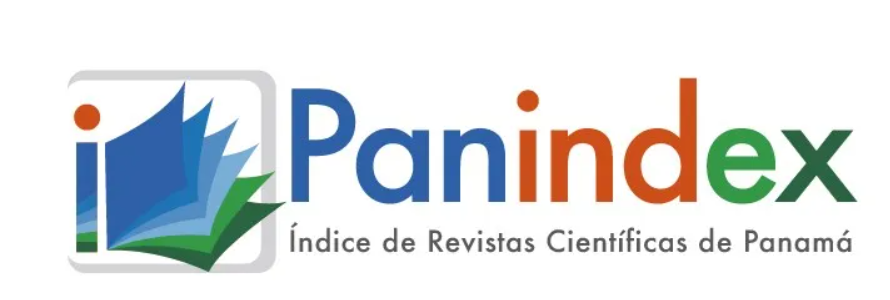Manuscripts sent to SALUTA Magazine must be original and unpublished and must not be simultaneously in the process of publication in other magazines, compilations or any other means of publication. The content of the publications and the links suggested in them are the sole responsibility of the authors and not of the METROPOLITAN UNIVERSITY OF EDUCATION, SCIENCE AND TECHNOLOGY
(UMECIT) or the magazine SALUTA. They are protected by international copyright laws as well as the logos of UMECIT AND SALUTA MAGAZINE, hence their reproduction is totally prohibited. The copyright will belong to the UMECIT.
Under a Creative Commons Attribution License authors may share work with acknowledgment of authorship of the work and initial publication in this journal.



Abstract
Biosecurity is an issue that has a lot of relevance in the health of staff, patients, and the community; in recent years the health authorities have emphasized its compliance, since this ensures a quality care to the patient. The objective of the study was to analyze biosecurity measures as a determining factor in the quality of patient care in the intensive care unit. A review of documentary database was carried out such as: Scielo, Dialnet, Medline, Lilac, and Google Scholar. Most studies show that biosecurity measures ensure that staff and patients have a reduced risk of infection associated with health care, thus guaranteeing the quality of care in the care unit intensive. Conclusions: Knowledge, attitude, and adherence of health personnel to biosecurity measures such as: hand washing, correct use of personal protective equipment, are critical aspects in health institutions that reduce the risk of patients and staff acquiring health care-associated infections.
Keywords
References
Aguilar-Elena R, González Sánchez J, Morchón R, Martínez-Merino V. (2015). ¿Seguridad biológica o bioseguridad laboral? Gac Sanit [Internet].;29(6):473. Disponible en: http://dx.doi.org/10.1016/j.gaceta.2015.07.011
Aguirre-Gas, H. (2008). Sistema ISO 9000 o evaluación de la calidad de la atención médica. Cirugía y Cirujanos.;76(2):187–96.
Annia C. (2011). Programa de lavado de manos: Retos y perspectivas MediSur. Vol. 9. Cuba.
Barragán Tarazona MC, Contreras Ruiz M del P, Martínez RE. (2019) Nivel de conocimiento en el personal de Enfermería sobre el manejo y segregación de los residuos sólidos Hospitalarios de las Unidades de Cuidados Intensivos en la CLINICA SAN JOSÉ. Cúcuta, Universidad de Santander.
Condor Dorre, Garay AC. (2019) Conocimiento y adherencia de la técnica del lavado de manos de las enfermas en la unidad de cuidados intensivos del hospital Sergio Bernales [Internet]. [Lima -Perú]. Disponible en: https://1library.co/document/zgr2e02q-conocimiento-adherecia-tecnica
Díaz-Vélez C, Neciosup-Puicán E, Fernández- Mogollón JL, Tresierra-Ayala MÁ, Apolaya-Segura M. (2016) . Mortalidad atribuible a infecciones nosocomiales en un hospital de la Seguridad Social en Chiclayo, Perú. Acta médica Perú [Internet]. 2016;33(3):250. Disponible en: http://dx.doi.org/10.35663/amp.2016.333.124
Firme R. y Verón, N. MEDIDAS DE BIOSEGURIDAD HOSPITALARIAS. 2017 [citado el 23 de agosto de 2022]; Disponible en: https://www.academia.edu/33836558/MEDIDAS_DE_BIOSEGURIDAD_HOSPIT
Flores Barrios, LB. Efectividad de una intervención formativa en el personal de enfermería en el cumplimiento de las normas de lavado de manos en el servicio de UCI. Perú: EsSalud; 2016.
Galán-Rodas MA-SE. (2012). Evidencias en Bioseguridad en el proceso de atención de salud (Parte I).;5(4):58–62. Disponible en: http://dx.doi.org/ISSN-e2227-4331,
Galdós Sánchez M del C, Basulto Barroso MM, Quesada Leyva L. (2018). Gestión del conocimiento en Bioseguridad: su conveniencia para la disminución de riesgos en los laboratorios. Edumecentro [Internet]. [citado el 23 de agosto de 2022];10(4):215–9. Disponible en: http://scielo.sld.cu/scielo.php?script=sci_arttext&pid=S2077-28742018000400017&lng=es
Gómez FJC, Sáenz CAM, Tomalá RSM, Mazón VMS. (2020). Manejo de los desechos hospitalarios y su incidencia en la salud del personal de enfermería. Hospital Clínica San Francisco 2018 – 2019. Anál comport las líneas crédito través corp financ nac su aporte al desarro las PYMES Guayaquil 2011-2015 [Internet] [citado el 23 de agosto de 2022];4(2):115–36. Disponible en: https://reciamuc.com/index.php/RECIAMUC/article/view/484
González JJE, editor. (2019). Salvando vidas: Lavado de manos [Internet]. Vol. 33. Revista Medicina Crítica; may./jun 2019. Disponible en: https://www.scielo.org.mx/scielo.php?script=sci_arttext&pid=S2448-8909201
González-Méndez MI, López-Rodríguez L. (2017). Seguridad y calidad en la atención al paciente crítico. Enferm Clin [Internet]; 27(2):113–7. Disponible en: http://dx.doi.org/10.1016/j.enfcli.2017.02.006
Guglielmino M, Paleari L, Ruiz G, Sandoval E, Velárdez D, Morales O, et al. (2021). Proyecto adherencia a la colocación y retiro de EPP en unidad de cuidados intensivos COVID 19” Estudio antes y después. Cicsp org.
Ijaz S, Sauni R, Toomey E, Blackwood B, Tikka C, Ruotsalainen JH, editores. (2020). Equipos de protección personal para la prevención de enfermedades altamente infecciosas por exposición a fluidos corporales contaminados en el personal sanitario Editor de seguimiento: Grupo de Trabajo Cochrane. Jos H Verbeek (s/f)
Vela Saavedra, R., Coronel Alarcón, A., & Palomino Alvarado, G. del P. (2021). Disposición final de residuos sólidos hospitalarios . Ciencia Latina Revista Científica Multidisciplinar, 5(3), 2622-2646. https://doi.org/10.37811/cl_rcm.v5i3.478
Downloads
Publication Facts
Reviewer profiles N/A
Author statements
- Academic society
- Universidad Metropolitana de Educación, Ciencia y Tecnología
- Publisher
- Universidad Metropolitana de Educación, Ciencia y Tecnología



















